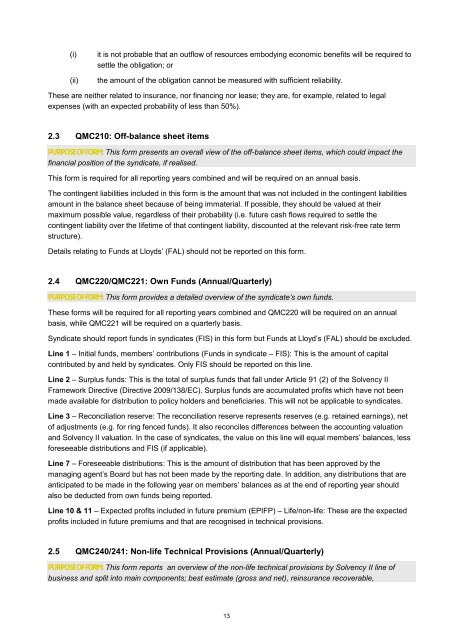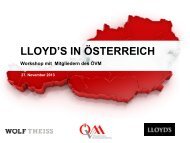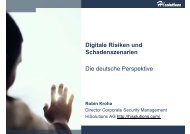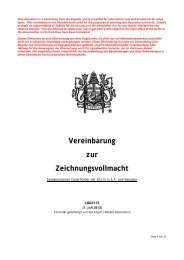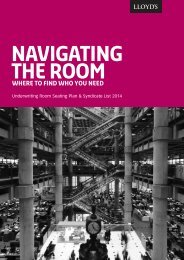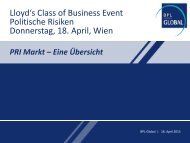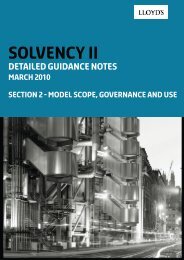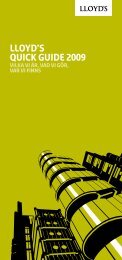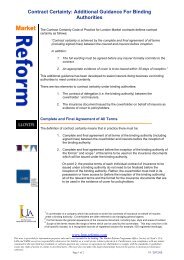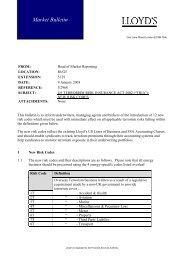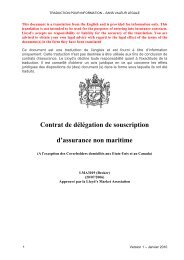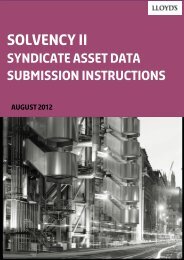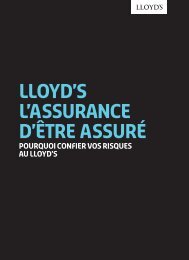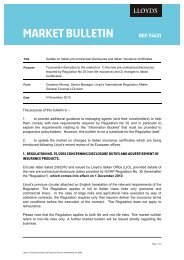You also want an ePaper? Increase the reach of your titles
YUMPU automatically turns print PDFs into web optimized ePapers that Google loves.
(i) it is not probable that an outflow of resources embodying economic benefits will be required to<br />
settle the obligation; or<br />
(ii) the amount of the obligation cannot be measured with sufficient reliability.<br />
These are neither related to insurance, nor financing nor lease; they are, for example, related to legal<br />
expenses (with an expected probability of less than 50%).<br />
2.3 QMC210: Off-balance sheet items<br />
Purpose of form: This form presents an overall view of the off-balance sheet items, which could impact the<br />
financial position of the syndicate, if realised.<br />
This form is required for all reporting years combined and will be required on an annual basis.<br />
The contingent liabilities included in this form is the amount that was not included in the contingent liabilities<br />
amount in the balance sheet because of being immaterial. If possible, they should be valued at their<br />
maximum possible value, regardless of their probability (i.e. future cash flows required to settle the<br />
contingent liability over the lifetime of that contingent liability, discounted at the relevant risk-free rate term<br />
structure).<br />
Details relating to Funds at Lloyds’ (FAL) should not be reported on this form.<br />
2.4 QMC220/QMC221: Own Funds (Annual/Quarterly)<br />
Purpose of form: This form provides a detailed overview of the syndicate’s own funds.<br />
These forms will be required for all reporting years combined and QMC220 will be required on an annual<br />
basis, while QMC221 will be required on a quarterly basis.<br />
Syndicate should report funds in syndicates (FIS) in this form but Funds at Lloyd’s (FAL) should be excluded.<br />
Line 1 – Initial funds, members’ contributions (Funds in syndicate – FIS): This is the amount of capital<br />
contributed by and held by syndicates. Only FIS should be reported on this line.<br />
Line 2 – Surplus funds: This is the total of surplus funds that fall under Article 91 (2) of the <strong>Solvency</strong> <strong>II</strong><br />
Framework Directive (Directive 2009/138/EC). Surplus funds are accumulated profits which have not been<br />
made available for distribution to policy holders and beneficiaries. This will not be applicable to syndicates.<br />
Line 3 – Reconciliation reserve: The reconciliation reserve represents reserves (e.g. retained earnings), net<br />
of adjustments (e.g. for ring fenced funds). It also reconciles differences between the accounting valuation<br />
and <strong>Solvency</strong> <strong>II</strong> valuation. In the case of syndicates, the value on this line will equal members’ balances, less<br />
foreseeable distributions and FIS (if applicable).<br />
Line 7 – Foreseeable distributions: This is the amount of distribution that has been approved by the<br />
managing agent’s Board but has not been made by the reporting date. In addition, any distributions that are<br />
anticipated to be made in the following year on members’ balances as at the end of reporting year should<br />
also be deducted from own funds being reported.<br />
Line 10 & 11 – Expected profits included in future premium (EPIFP) – Life/non-life: These are the expected<br />
profits included in future premiums and that are recognised in technical provisions.<br />
2.5 QMC240/241: Non-life Technical Provisions (Annual/Quarterly)<br />
Purpose of form: This form reports an overview of the non-life technical provisions by <strong>Solvency</strong> <strong>II</strong> line of<br />
business and split into main components; best estimate (gross and net), reinsurance recoverable,<br />
13


